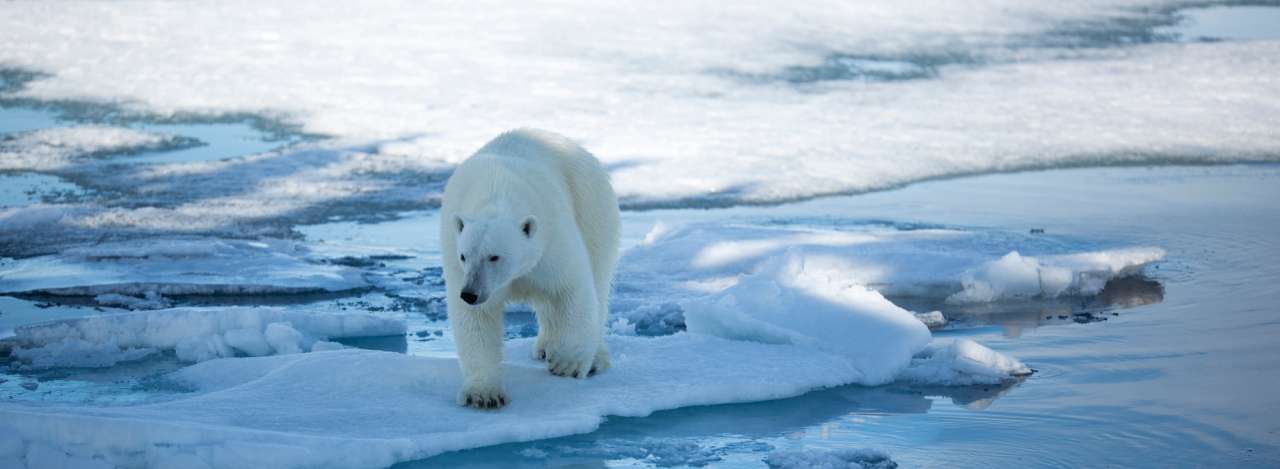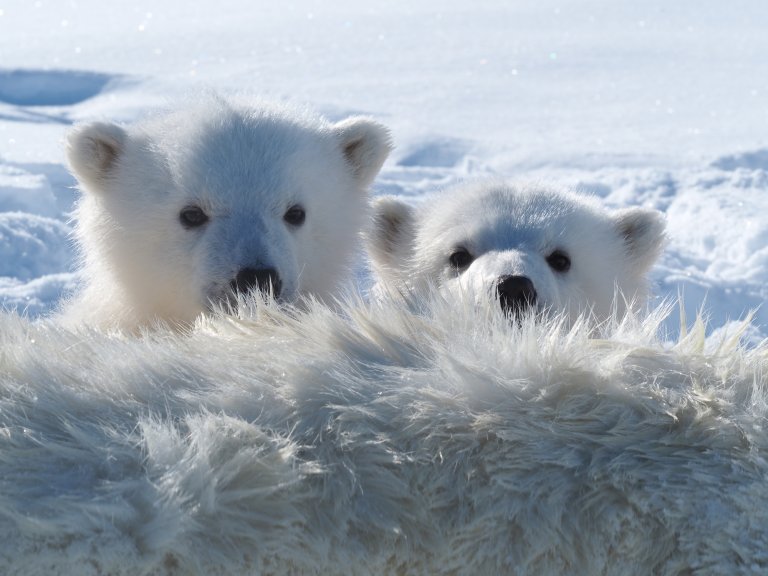
Isbjørn
Isbjørn er avhengig av sjøisen for å finne mat, parringspartnere og nye steder å bevege seg på. Det raskt endrede klimaet i Arktis har ført til en stor nedgang i sjøisarealet og utgjør dermed en stor trussel for isbjørnen

Ved å undersøke mønster og endringshastighet i genetisk struktur og diversitet, samt utveksling av genetisk materiale mellom subpopulasjoner av isbjørn kan man forutse distribusjonen og overlevelsen til arten på sikt.
Prosjektene på isbjørn er et samarbeid med Norsk Polarinstitutt som driver prøveinnsamling i Barentshavet. I løpet av 2020 skal mitokondrie-DNA fra over 1000 ulike isbjørn kartlegges hos NIBIO Svanhovd.

Foto: Jon Aars, Norsk Polarinstitutt
Publikasjoner
Forfattere
V. E. Kutschera C. Frosch A. Janke K. Skirnisson T. Bidon N. Lecomte S. R. Fain Hans Geir Eiken Snorre Hagen U. Arnason K. L. Laidre C. Nowak F. HailerSammendrag
Projections by the Intergovernmental Panel on Climate Change (IPCC) and sea ice forecasts suggest that Arctic sea ice will decline markedly in coming decades. Expected effects on the entire ecosystem include a contraction of suitable polar bear habitat into one or few refugia. Such large-scale habitat decline and fragmentation could lead to reduced genetic diversity. Here we compare genetic variability of four vagrant polar bears that reached Iceland with that in recognized subpopulations from across the range, examining 23 autosomal microsatellites, mitochondrial control region sequences and Y-chromosomal markers. The vagrants' genotypes grouped with different genetic clusters and showed similar genetic variability at autosomal microsatellites (expected heterozygosity, allelic richness, and individual heterozygosity) as individuals in recognized subpopulations. Each vagrant carried a different mitochondrial haplotype. A likely route for polar bears to reach Iceland is via Fram Strait, a major gateway for the physical exportation of sea ice from the Arctic basin. Vagrant polar bears on Iceland likely originated from more than one recognized subpopulation, and may have been caught in sea ice export during long-distance movements to the East Greenland area. Although their potentially diverse geographic origins might suggest that these vagrants encompass much higher genetic variability than vagrants or dispersers in other regions, the four Icelandic vagrants encompassed similar genetic variability as any four randomly picked individuals from a single subpopulation or from the entire sample. We suggest that this is a consequence of the low overall genetic variability and weak range-wide genetic structuring of polar bears – few dispersers can represent a large portion of the species' gene pool. As predicted by theory and our demographic simulations, continued gene flow will be necessary to counteract loss of genetic variability in increasingly fragmented Arctic habitats. Similar considerations will be important in the management of other taxa that utilize sea ice habitats.
Forfattere
Tobias Bidon Axel Janke Steven R. Fain Hans Geir Eiken Snorre Hagen Urmas Saarma Björn M. Hallström Nicolas Lecomte Frank HailerSammendrag
Det er ikke registrert sammendrag
